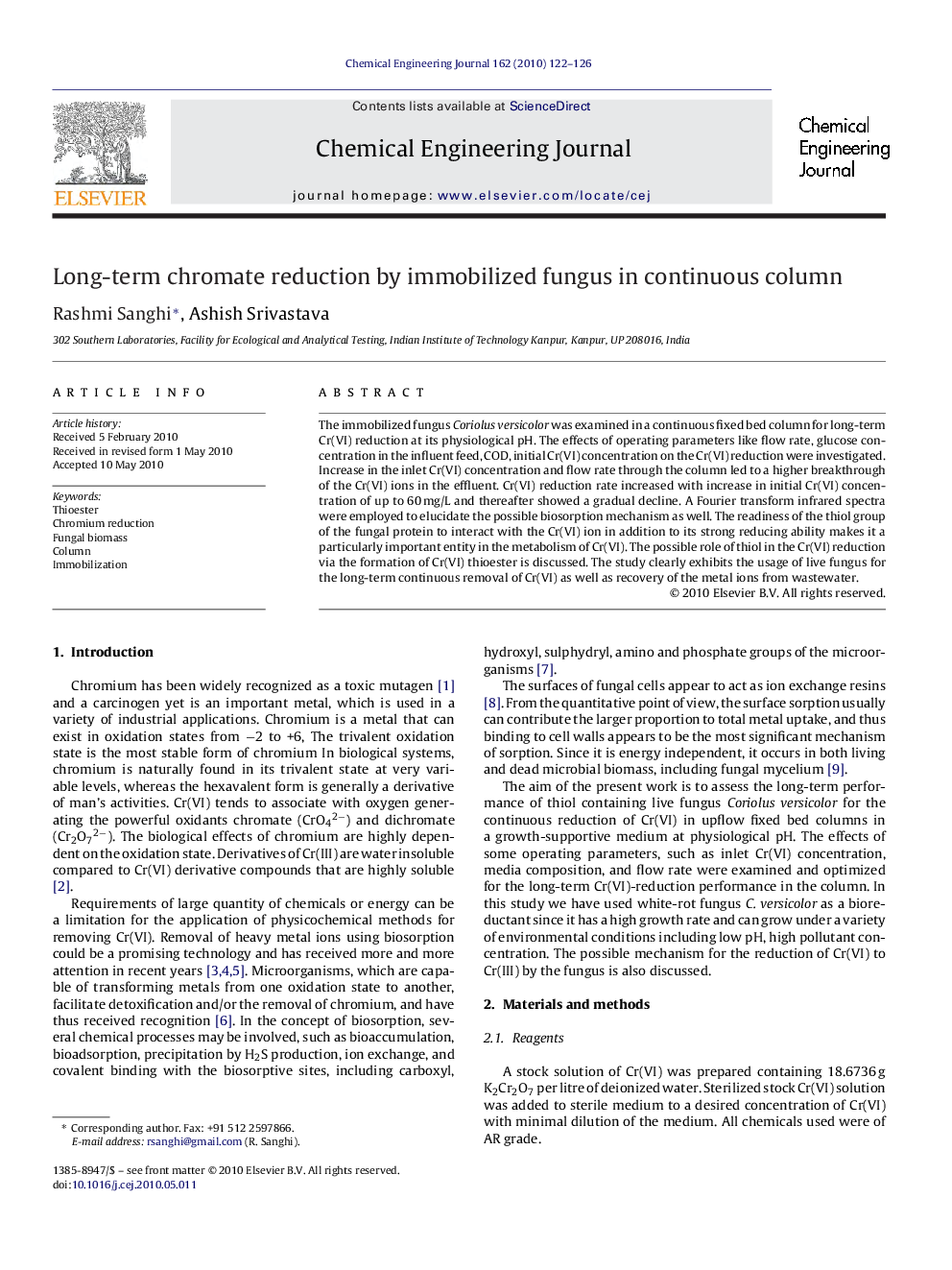| Article ID | Journal | Published Year | Pages | File Type |
|---|---|---|---|---|
| 152410 | Chemical Engineering Journal | 2010 | 5 Pages |
The immobilized fungus Coriolus versicolor was examined in a continuous fixed bed column for long-term Cr(VI) reduction at its physiological pH. The effects of operating parameters like flow rate, glucose concentration in the influent feed, COD, initial Cr(VI) concentration on the Cr(VI) reduction were investigated. Increase in the inlet Cr(VI) concentration and flow rate through the column led to a higher breakthrough of the Cr(VI) ions in the effluent. Cr(VI) reduction rate increased with increase in initial Cr(VI) concentration of up to 60 mg/L and thereafter showed a gradual decline. A Fourier transform infrared spectra were employed to elucidate the possible biosorption mechanism as well. The readiness of the thiol group of the fungal protein to interact with the Cr(VI) ion in addition to its strong reducing ability makes it a particularly important entity in the metabolism of Cr(VI). The possible role of thiol in the Cr(VI) reduction via the formation of Cr(VI) thioester is discussed. The study clearly exhibits the usage of live fungus for the long-term continuous removal of Cr(VI) as well as recovery of the metal ions from wastewater.
